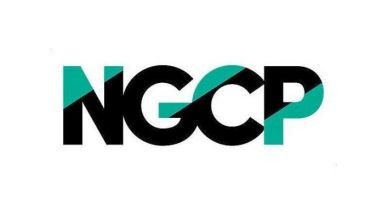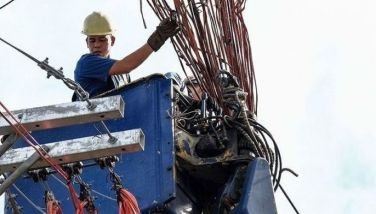Visit of Secretary John Kerry

Last month, the US Secretary of State made a very brief visit to Manila. As announced by the embassy, the objective of the visit was to repair the damage to the credibility of America’s so-called “pivot to Asia†from President Obama’s canceled trip as well as Kerry’s canceled visit due to a typhoon. It was my expectation that he would comment on the recently announced Chinese Air Defense Zone as well as clarify his position on the Clinton “pivot to Asia†doctrine versus his “rebalancing to Asiaâ€. Moreover, I expected he would also address an enhanced economic cooperation in the Philippines and the region.
I was fortunate to have been invited to a small gathering of business executives and former government officials at the Diamond Hotel. After a one hour delay, the Secretary made brief remarks focusing on the resilience of the Filipino people, the confirmation of an additional $40 million for military assistance and verbal support for securing Category 1 from the Federal Aviation Authority.
He did focus on the importance of the Trans Pacific Partnership (TPP) and encouraged the Philippines to join. President Aquino in September 2010 announced we are open to joining if it benefits the country. Such membership, however, would require Constitutional amendments to some of its economic provisions including on foreign equity restrictions. But for his own reasons, the President adamantly rejected proposals to amend the Constitution.
Subsequent to our brief meeting, the Secretary and his party went to DFA for a meeting with Secretary Albert del Rosario. He then went to the Palace for a more formal bilateral meeting with the President followed by a small dinner. The newspapers described the meetings as productive and Secretary Kerry was quoted as having assured the Philippines that our alliance was stronger than ever. The new guy in charge of Asia-Pacific Affairs at the State Department, Daniel Russell certainly makes a case for it, citing growing US engagement with Asia-Pacific countries on a wide front.
To me these engagements are nothing new. My personal impression of his visit however, is that it left me not that much more assured about America’s commitment to Asia-Pacific and to the Philippines in particular. In his brief remarks to us at the Diamond Hotel, I felt he patronized us with motherhood statements. I understand that the meeting with DFA and the President was likewise not conclusive. Some analysts blame the seeming come down from the Asia-Pacific as the new centerpiece of American policy in Obama’s first term to a series of crisis (including the Syrian civil war) and change in personnel at both the White House and the State Department. These developments certainly have an impact on this policy shift.
My take on this is that although Kerry did not specifically address the difference between Hillary Clinton’s “pivot to Asia†and his “rebalancing to Asiaâ€, it is clear that this is an acknowledgement that the Middle East and Europe remain key to US foreign policy objectives, but that attention must be paid to the Asia-Pacific itself for America’s own strategic interest in the face of a more assertive China. But on how to respond to this development, America is ambivalent. Although they are wary of China’s ambitions, they do not necessarily want to openly oppose it. Their strong and intricate economic ties, the role of China in keeping a lid on North Korea and need for their support on Iran and climate change, and fear of driving China into a resurgent Russia’s arms temper their aggressiveness in challenging this assertiveness. Meantime, China is quick to seize on this ambivalence and is increasingly emboldened.
Perhaps then one should always keep in mind: “There are no permanent friends, only permanent interests.â€
Still more Yolanda casualties – this time self inflicted
Every time, I read the morning newspapers I am dismayed at the continuing negative stories regarding the government’s response to the aftermath of Yolanda. Although any government would have been overwhelmed by the magnitude of the disaster, it has been already two months later and despite the outpouring of donations in kind and in cash from home and overseas – there still seems to be no semblance of a coordinated and comprehensive effort to transition these efforts from relief to rehabilitation and recovery. In the meantime, Yolanda’s survivors continue to face daily challenges to survive, not to mention their uncertain future.
I thought that at least someone is taking charge with the appointment of former Senator Panfilo Lacson as “rehabilitation czarâ€. But as it is turning out, he has as much powers as Czar Nicholas II as he was being led away from his palace by his Bolshevik captors. Lacson’s appointment is via an office order so he has no authority to spend funds or implement projects. So instead of leading a coordinated charge, we are treated to the spectacle of government officials bickering over allegations of overpricing and substandard construction of temporary bunkhouses. Predictably, an indignant and morally outraged Congress wants to step in and investigate these alleged shenanigans. Who better to do this, right? My worry is that all this “moro-moro†only serves to reinforce perception in the international community that our recovery efforts are dysfunctional and riven by corruption which may nevertheless inhibit any additional funding. This perception of course is unfair for those involved including Secretary Singson who has been accused of tolerating substandard construction and overpricing. It is just that the lack of coordination meant agencies with the best of intentions acting beyond their core competencies. Apparently, DSWD was aware of the international standards for temporary housing but did not share them.
Yolanda is not the only natural disaster that has occurred in the last decade which required massive rehabilitation efforts with the participation of the global community. The response to the Aceh tsunami, the Haiti earthquake and cyclone Nargis in Myanmar have provided valuable lessons and template of the most effective way of going about it. Circumstances differ of course and no solution has proven to be without its flaws. But all told – with the glaring exception of Haiti – they have proven to be the best practice so far. The rehabilitation of Aceh – which suffered 150,000 dead and rendered 700,000 homeless – for example began with a master plan that explicitly linked recovery and rehabilitation to development – that is with the end goal to make things better than they were before in terms of safety and economic opportunities for the survivors. Then an agency was established (with a fixed term of five years) to coordinate and implement the rehabilitation and reconstruction based on the master plan. A separate Multilateral Donor Fund (MDF) body was also set up to pool and coordinate bilateral and multilateral funds. The UN itself set up a coordinating office as a one stop shop in dealing with the various UN agencies involved as well as with international NGOs. All these efforts involved extensive dialogue with all the stakeholders, including the local government which is necessary if the rehabilitation efforts were to be sustainable.
The irony is it is as if no one in government has heard about these precedents. Dean Tony La Viña of Ateneo laments how we lost the opportunity to enhance our capability to respond to such disaster when Congress enacted Republic Act No. 10121 (the Philippine Disaster Risk Reduction and Management Act of 2010 or DRRM Act) which, while recognizing the importance of disaster reduction over disaster response, did not result in the creation of “a single, permanent organization with the mandate, powers, and budget to oversee a singular, comprehensive, coordinated strategy for addressing natural and man-made disasters†but rather in a change in name of the agency in charge from NDCC to the NDRRMC and not its mandate and structure. La Viña blames the Senate in opting for the status quo and opposing such a meaningful change.
Another dismaying development is a result of politics rearing its ugly head at the expense of the typhoon victims. Many have heard about New Jersey Governor Chris Christy and the “bridgegate affairâ€. In an apparent act of political vindictiveness, his trusted assistant conspired to create a traffic jam on the George Washington Bridge which was detrimental to the city of Fort Lee whose mayor did not support the Governor’s reelection. Based on eye witness testimony of one of my maids, she experienced that in her barangay. Her barangay was not given any aid after Yolanda from the local government because they supported the wrong party. It was only when the Americans arrived that they were given relief goods. I understand that this kind of political vindictiveness is quite common whenever there is a typhoon or earthquake. With all due respect, I would suggest that the President must address this issue by demonstrating by example that he has personally stopped this act of political vindictiveness in selected towns of the Yolanda impacted area.
- Latest
- Trending
























